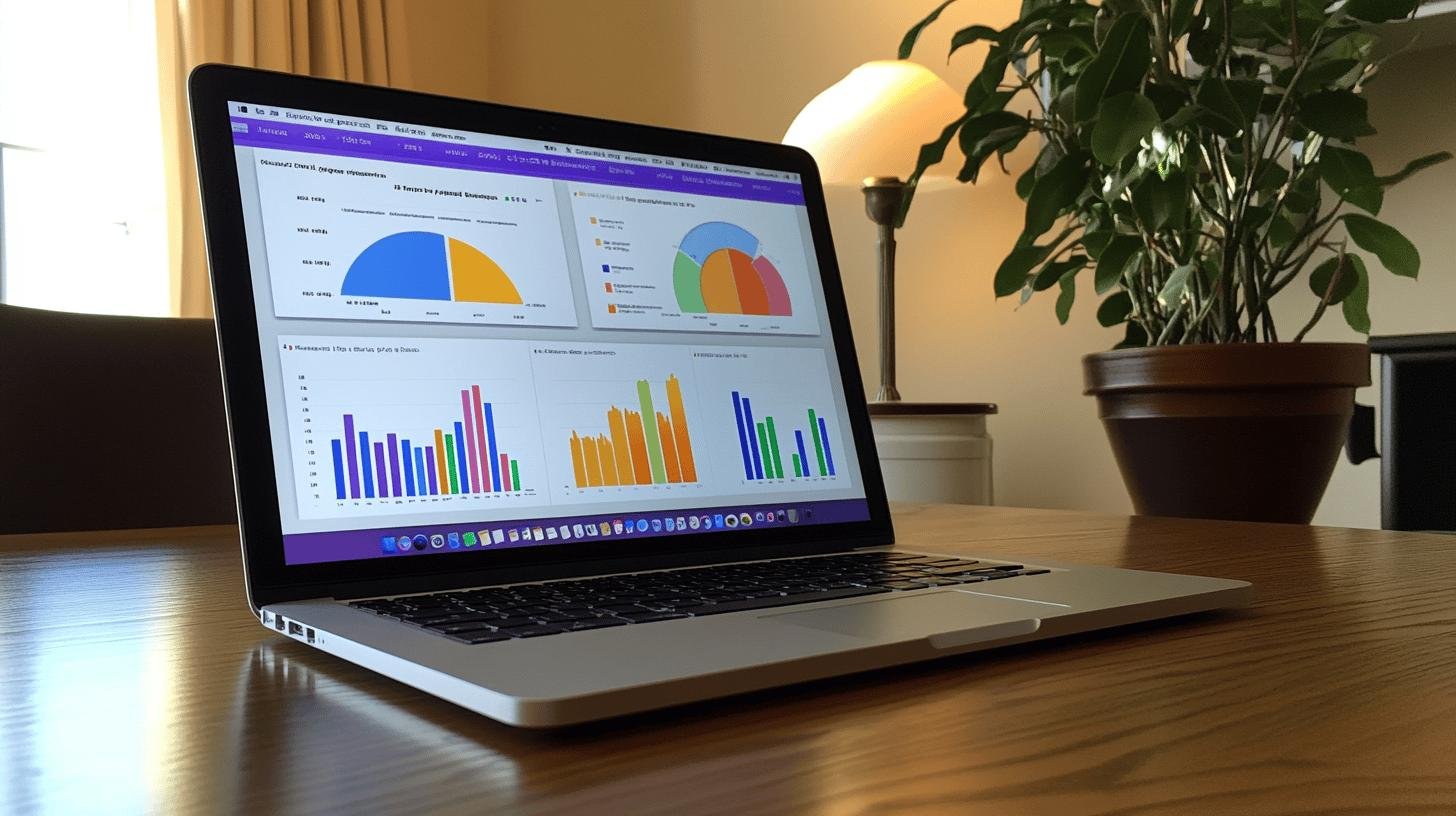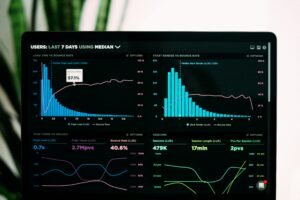Have you ever had the feeling that making decisions is a wild guess? What if it were as simple to forecast business trends as it was to check the weather? Greetings from the realm of modeling and analytics. It all comes down to making smarter decisions with data and intelligent algorithms. We’ll look at how these tools turn numerical data into insights that help us identify possibilities, steer clear of dangers, and make sure decisions. Are you prepared to create a crystal ball out of your data? Now let’s explore the specifics of analytics and modeling!
Understanding Analytics and Modeling
Analytical modeling, also known as analytics and modeling, is essential in data analysis and decision-making. It helps us gain insights, make predictions, and shape business strategies. By using these models, we can turn raw data into valuable information to guide our decisions.
Mathematical and statistical models are the backbone of analytics and modeling. They help us understand and interpret data, identify patterns, and predict future outcomes based on historical data. These models act like a crystal ball, giving us a glimpse of what might happen next.
- Data Collection: Gather data from sources like customer transactions, market trends, or operational metrics.
- Data Cleaning: Ensure the data is accurate and ready for analysis.
- Model Building: Create mathematical and statistical models to analyze the data.
- Model Testing: Validate the models to check their accuracy.
- Model Deployment: Use the models to make predictions and inform decisions.
Types of Analytics Models

There are four main types of analytics modeling: descriptive, diagnostic, predictive, and prescriptive. Each type builds on the previous one, increasing in complexity and offering greater insights.
1. Descriptive Analytics
Descriptive analytics answers, “What happened?” It looks at historical data to identify trends and patterns. Think of it as a report card for your data, showing you where you’ve been. For example, sales reports showing monthly revenue trends fall into this category.
2. Diagnostic Analytics
Diagnostic analytics goes further by asking, “Why did this happen?” It digs into the data to find the root causes of events. If your sales dropped last quarter, diagnostic analytics might reveal that a specific product underperformed or a marketing campaign didn’t reach its audience.
3. Predictive Analytics
Predictive analytics is like looking into a crystal ball. It forecasts future events based on historical data. By analyzing past trends, it predicts what’s likely to happen next. Retailers often use predictive analytics to forecast inventory needs, helping them stock up on items expected to sell well.
4. Prescriptive Analytics
Prescriptive analytics goes beyond predictions to suggest actions for achieving desired outcomes. It answers, “What should we do?” If predictive analytics forecasts a spike in demand, prescriptive analytics might suggest increasing production or launching a targeted marketing campaign.
Key Techniques in Predictive Modeling
Predictive modeling techniques are vital for making smart decisions. These methods help us forecast future events based on past data. Let’s dive into some key techniques that make this possible.
1. Multiple Regression Analysis
Multiple regression analysis is like cooking a complex recipe. You use many independent variables (ingredients) to predict the dependent variable (final dish). Imagine you want to predict your monthly expenses. You’d consider rent, groceries, utilities, and more. This technique uses a linear equation to find the relationship between these variables and your expenses.
2. Supervised Learning
Supervised learning is like teaching a dog new tricks. You train a model on labeled data, where the answers (labels) are already known. It’s like showing your dog how to sit by giving treats. In predictive modeling, you feed the model lots of data with known outcomes. The model learns from this data and can predict future outcomes based on new inputs.
3. Unsupervised Learning
Unsupervised learning is like exploring a new city without a map. You don’t have labeled data to guide you, but you can still find hidden patterns. This technique is useful for clustering and association. For example, it helps online stores group customers with similar shopping habits, even if they don’t know much about those customers initially.
Tools for Analytics and Modeling

The right tools can make all the difference in analytics and modeling. These tools help us sift through data, build models, and derive insights to guide decisions. Choosing the right one depends on your needs, whether it’s handling big data, performing complex calculations, or visualizing results.
Tools like R, Python, SAS, and cloud-based platforms each have unique strengths. R is a powerhouse for statistical analysis with extensive libraries. Python is loved for its readability and versatile libraries like Pandas and Scikit-learn. SAS offers a comprehensive package for data management and advanced analytics. Cloud platforms like AWS, Azure, and Google Cloud provide scalable solutions for handling massive datasets and complex computations.
- R: Robust statistical analysis capabilities with extensive libraries.
- Python: Readable and versatile, with libraries like Pandas and Scikit-learn.
- SAS: Comprehensive solutions for data management and advanced analytics.
- AWS: Scalable cloud platform for managing large datasets.
- Google Cloud: Offers machine learning and analytics tools with easy integration.
Practical Applications of Analytics and Modeling
Analytics and modeling play a crucial role in various industries. They help businesses make better decisions, optimize operations, and improve customer experiences. Let’s explore how different sectors use these powerful tools.
1. Business Analytics Models
Business analytics models optimize operations and enhance decision-making. For example, companies analyze sales data to identify trends and make informed choices about inventory and staffing. By understanding which products are selling well and when businesses can manage stock more efficiently and ensure they have the right number of employees at peak times.
2. Marketing Analytics
Marketing analytics models improve customer targeting and campaign effectiveness. These models analyze customer data to identify buying patterns and preferences. If a company knows a particular demographic is more likely to buy a product, it can target ads specifically to them. This not only increases sales but also ensures marketing budgets are spent wisely.
3. Financial Modeling
Financial modeling is essential for risk assessment and investment strategies. Businesses use these models to predict financial performance and evaluate the potential risks of investments. For instance, if a company is considering investing in new technology, financial models can help predict the return on investment and assess any financial risks involved.
4. Healthcare Predictive Models
Healthcare predictive models forecast patient outcomes and improve care. By analyzing patient data, these models can predict which patients are at higher risk for certain conditions. This allows healthcare providers to intervene early, possibly preventing complications and improving patient care. For example, predictive models can identify patients at risk of readmission, helping hospitals provide targeted follow-up care.
5. Supply Chain Analytics
Supply chain analytics enhance efficiency and reduce costs. These models analyze data from various points in the supply chain to identify bottlenecks and inefficiencies. By understanding where delays are happening or where costs are highest, companies can make adjustments to streamline operations. For instance, if a manufacturer knows a particular supplier is consistently late, they can look for a more reliable partner, reducing delays and saving money.
Challenges and Best Practices in Analytics and Modeling

Ensuring data integrity is crucial for accurate analytics and modeling. Data integrity means the information is accurate, consistent, and reliable. If your data is messy or full of errors, your models won’t be trustworthy. That’s why data cleaning is often the first step in any analytics project.
Model validation is another key aspect. It’s like a quality check for your models. You test them to ensure they perform well on new, unseen data. This step helps catch any issues before the model is used in real-world situations.
Model selection, deployment, and optimization are also critical stages. Model selection involves choosing the best model based on performance metrics like accuracy and precision. Once you’ve picked a model, deployment is the next step. This is where you integrate the model into your production environment for real-time predictions. But the work doesn’t stop there. Optimization involves continuously improving the model’s performance, even after deployment. This ensures your model stays relevant and accurate over time.
- Ensure Data Integrity: Clean and preprocess your data to ensure accuracy.
- Validate Models: Test models on new data to check their performance.
- Select the Best Model: Choose the model with the highest performance metrics.
- Deploy Models Effectively: Integrate models into production environments.
- Optimize Continuously: Keep improving the model’s performance over time.
Conclusion
We went knee-deep into understanding analytics and modeling, from defining core concepts to exploring various types and techniques. We highlighted the importance of choosing the right tools and provided practical examples across different industries. Lastly, we tackled the challenges and best practices to help you navigate this complex field.
Analytics and modeling are all about making informed decisions and forecasting outcomes, pretty much the secret sauce for any business strategy.
FAQ
What is analytics and modeling?
Analytics and modeling is the process of using data analysis to make informed decisions. It involves mathematical and statistical methods to understand data, spot trends, and predict future outcomes.
What are business analytics, data analytics, and modeling?
Business analytics, data analytics, and modeling use data to guide decisions. Business analytics focuses on improving business operations, while data analytics covers a broader range of fields. Modeling helps predict outcomes based on data.
What is data modeling and analytics?
Data modeling and analytics involve creating a structure for data and using it to gain insights. Data modeling organizes data, while analytics interprets it to make predictions and decisions.
What is an analytical model in research?
An analytical model in research is a structured approach to interpret data. It uses mathematical and statistical tools to identify patterns and predict outcomes, helping researchers understand their data better.
What are the types of analytical models?
There are four types of analytical models: descriptive, diagnostic, predictive, and prescriptive. They range from explaining what happened to advising on future actions based on data insights.




